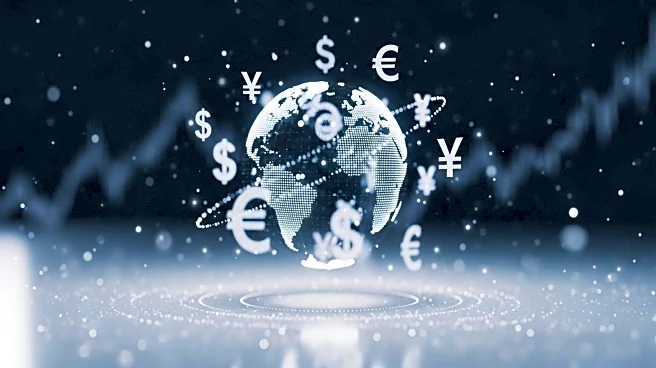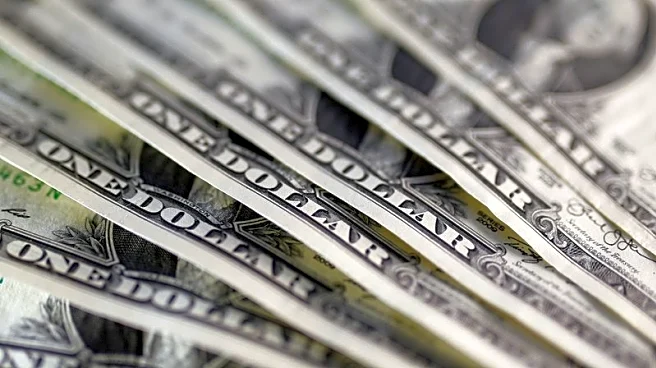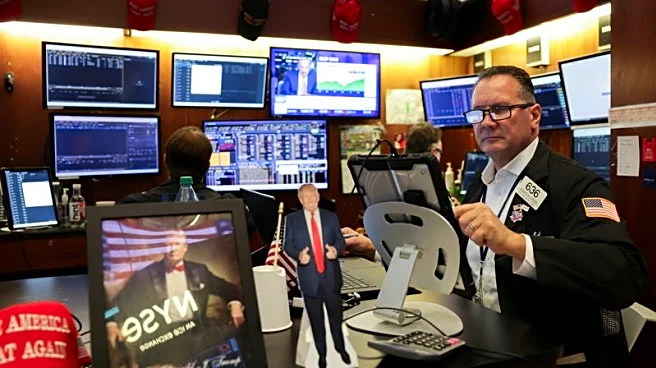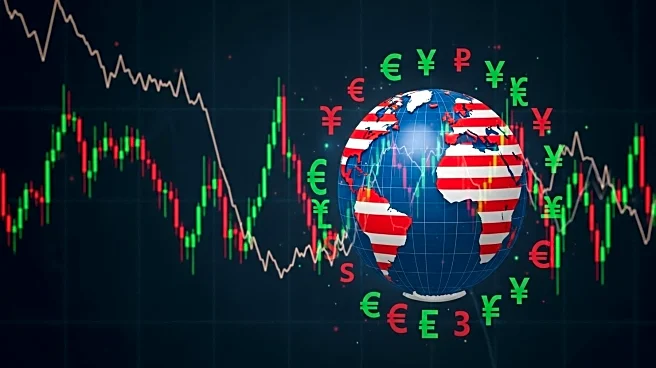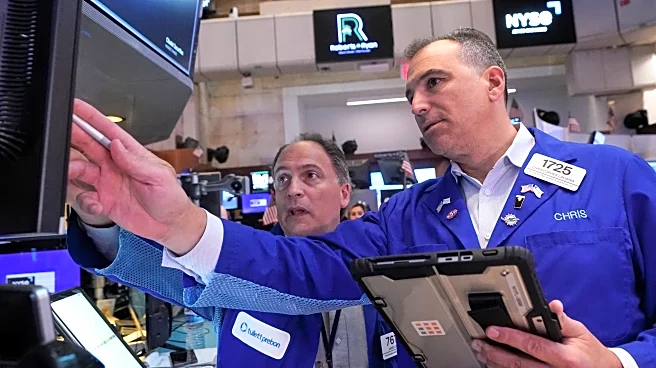What's Happening?
The Bank for International Settlements (BIS) has reported that global currency trading volumes reached a record $9.6 trillion per day in April, driven by market volatility following President Trump's 'Liberation Day' U.S. trade tariff announcements. The BIS survey, conducted every three years, highlights the U.S. dollar's continued dominance as the most traded currency, despite its depreciation. The survey also noted London's strengthened position as the leading foreign exchange hub, although the British pound's market share has declined. The increase in trading activity reflects heightened foreign exchange volatility, with asset managers selling dollar forward contracts to mitigate losses from the dollar's depreciation.
Why It's Important?
The surge in global currency trading underscores the significant impact of U.S. trade policies on international financial markets. The volatility triggered by tariff announcements has led to increased trading activity, affecting asset managers and investors with U.S. exposure. The dollar's depreciation raises questions about its status as the world's anchor currency, influencing global economic stability. Additionally, the rise of China's yuan and the decline of the euro and sterling in market share reflect shifting dynamics in global currency trading. These changes could have long-term implications for international trade and economic relations.
What's Next?
The ongoing volatility in currency markets may prompt further strategic adjustments by asset managers and investors, particularly those with significant U.S. exposure. As the dollar's status as a reserve currency is questioned, there may be increased interest in alternative currencies like the yuan. The BIS survey suggests that trading in interest rate derivatives is also on the rise, indicating potential shifts in investment strategies. Stakeholders will likely continue to monitor U.S. trade policies and their impact on global financial markets, with potential adjustments in currency trading strategies.
Beyond the Headlines
The record trading volumes highlight the interconnectedness of global financial markets and the influence of U.S. economic policies on international trade. The rise of the yuan and the decline of the euro and sterling may signal a gradual shift in global economic power dynamics. The increased trading in interest rate derivatives suggests a move away from dollar-denominated contracts, potentially affecting global interest rate policies. These developments could lead to broader discussions on currency stability and the future of international trade agreements.

